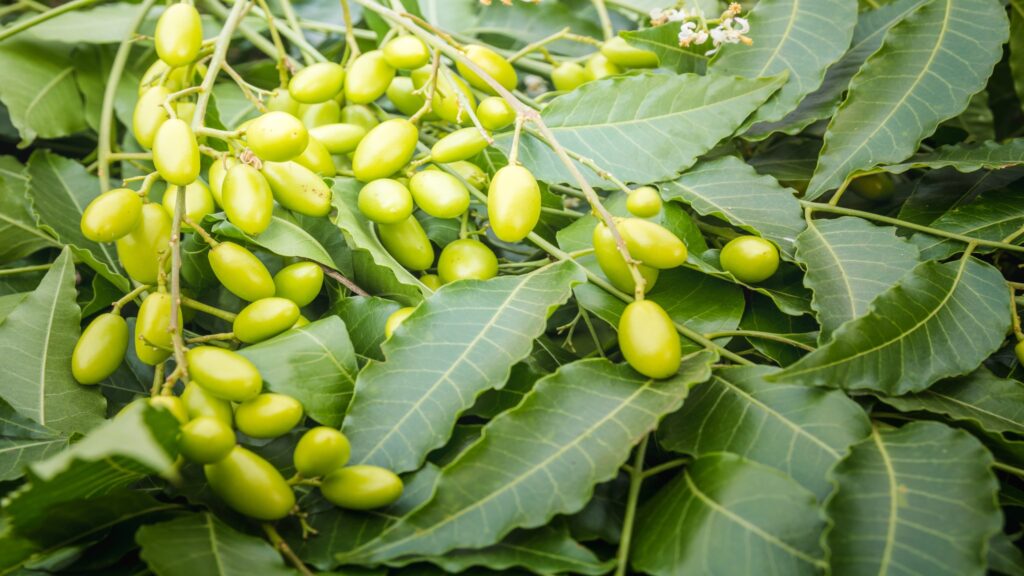
Unveiling the Miracles of Neem: Exploring the Ancient Wisdom of Azadirachta Indica |

Introduction: The Extraordinary World of Neem
Step into the extraordinary world of Azadirachta indica, commonly known as Neem, Indian Lilac, or Margosa Tree, or Nimtree is a sacred plant belonging to the Meliaceae or Mahogany family. Discover the ancient wisdom and remarkable healing properties that have made neem revered for centuries. From its adaptability in diverse climates to its rich cultural heritage, neem holds immense potential for holistic health and well-being. has been introduced and established throughout the tropics and subtropics. From the dry regions of South-East Asia, the Pacific Islands, and Australia, to South and Central America, the Caribbean, sub-Saharan Africa, and the Middle East, neem has found its place in diverse climates and ecosystems. It thrives in these areas, offering its medicinal and ecological benefits to communities around the globe. 🌍🌿
The Cultural Significance of Neem:
Explore the mesmerizing ethnobotanical wonders of neem, where its rich cultural and historical significance intertwines with traditional practices, rituals, and beliefs. Neem’s bitter taste and cleansing properties have made it an integral part of traditional cleansing rituals, symbolizing the purification of the body and soul. Neem twigs are employed as natural toothbrushes, promoting oral health and hygiene in various cultures. Additionally, neem leaves have found their place in traditional herbal formulations, addressing a diverse range of health concerns steeped in cultural traditions. According to Hindu mythology, neem is believed to have originated from Amrita, the elixir of immortality, when a few drops fell to earth and landed on a neem tree, imbuing it with its remarkable medicinal properties. The neem tree holds immense cultural significance, often planted near temples and homes, and its leaves are used in religious ceremonies and as offerings to the gods. 🙏🌳
Unveiling Neem’s Chemical Constituents:
Neem’s leaves, bark, and seeds have been used for centuries and showcase several unique chemical constituents such as triterpenoids like nimbin and nimbidin, powerful limonoids, and flavonoids such as quercetin. These compounds contribute to neem’s extensive range of medicinal uses and its potential for holistic healing. Nimbin and nimbidin exhibit anti-inflammatory properties and support immune function, while the potent limonoids display antifungal, antimalarial, and antitumor activities. Azadirachtin, another limonoid, acts as a natural insecticide, deterring pests and plant diseases. Quercetin, a flavonoid, contributes antioxidant and anti-inflammatory effects, promoting overall well-being and cellular health. Notably, neem has also shown anti-diabetic effects in several studies. 💚💪
 Neem leaves and fruits
Neem leaves and fruits
Harnessing the Energetic Properties of Neem:
Energetically, neem’s cooling nature (sheetvirya) corresponds to its traditional use in addressing heat-related conditions, including fever and skin inflammations. With its bitter taste (tiktarasa), neem is believed to possess cooling and drying properties, making it useful for stimulating digestion and addressing stomach problems. The pungent energy of neem stimulates the body and mind, making it valuable in balancing pitta and kapha doshas, reducing excess heat, inflammation, congestion, and phlegm. Moreover, neem is renowned for its cleansing and detoxifying action on the body. The Doctrine of Signatures: Within the fascinating doctrine of signatures, neem’s unique characteristics offer glimpses into its potential healing properties and applications. The milky sap of neem trees, resembling the white blood cells that our bodies produce to fight infection, is believed to possess wound-healing properties. Neem’s bitter taste signifies its association with cleansing and purifying the body, while its strong aroma suggests its potential as a natural insect repellent, effectively warding off pests and insects. These signature traits align with neem’s traditional uses and reflect the wisdom embedded within the Mahogany family.
Considerations and Caution:⚠️💀
While neem holds incredible health benefits, it’s important to note that high doses of neem extracts, specifically compounds like gedunin and nimbolide, have shown potential adverse effects on male reproduction and sperm. These compounds have demonstrated anti-fertility effects, including a decrease in sperm count, motility, and viability. In women, neem extracts can disrupt the menstrual cycle and prevent ovulation. It’s crucial to exercise caution and consult with healthcare professionals before using neem extracts or supplements, especially in high doses. Traditional uses of neem, such as those found in Ayurvedic medicine, typically involve lower doses that are unlikely to cause significant reproductive effects.
Key Points: